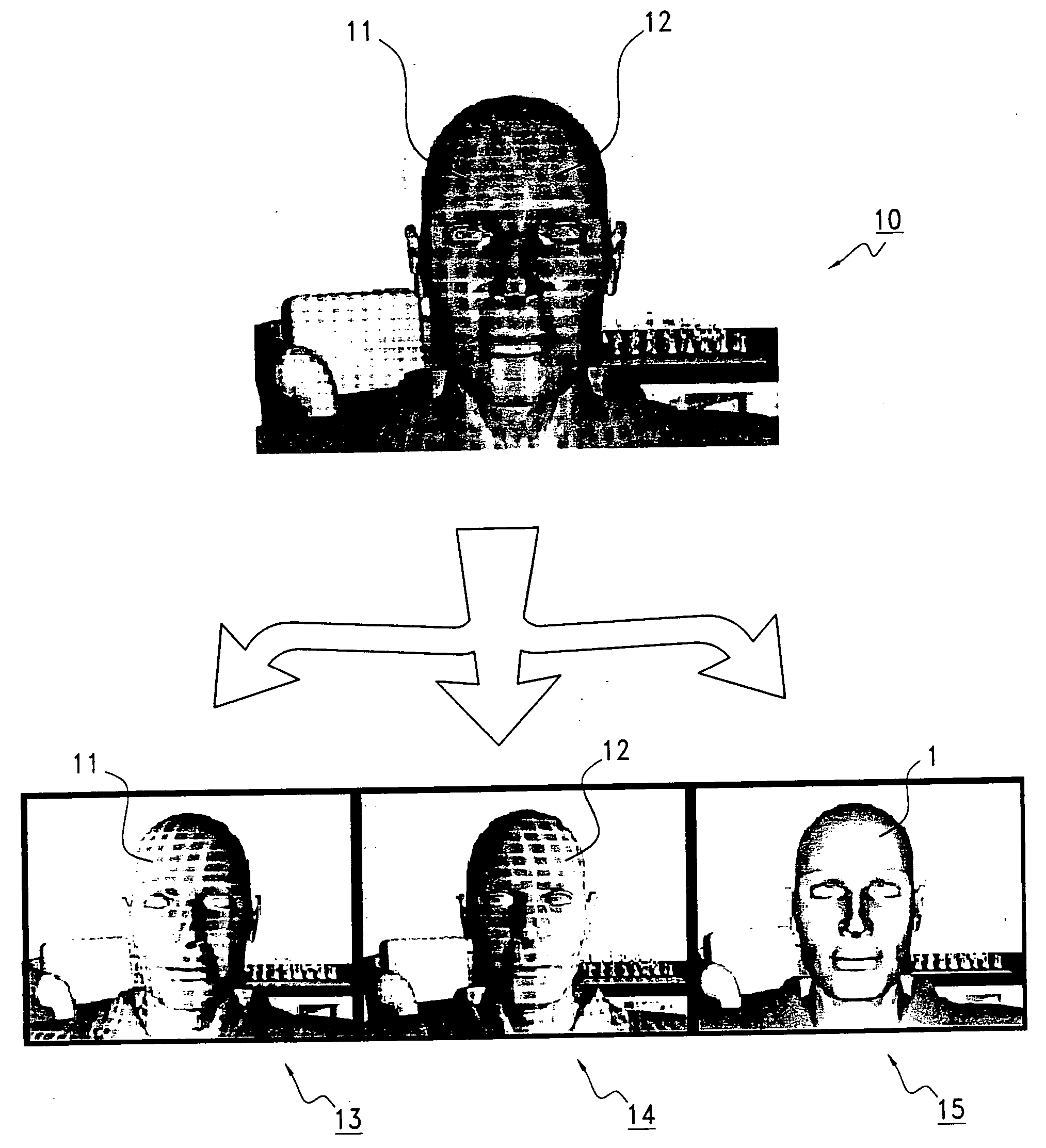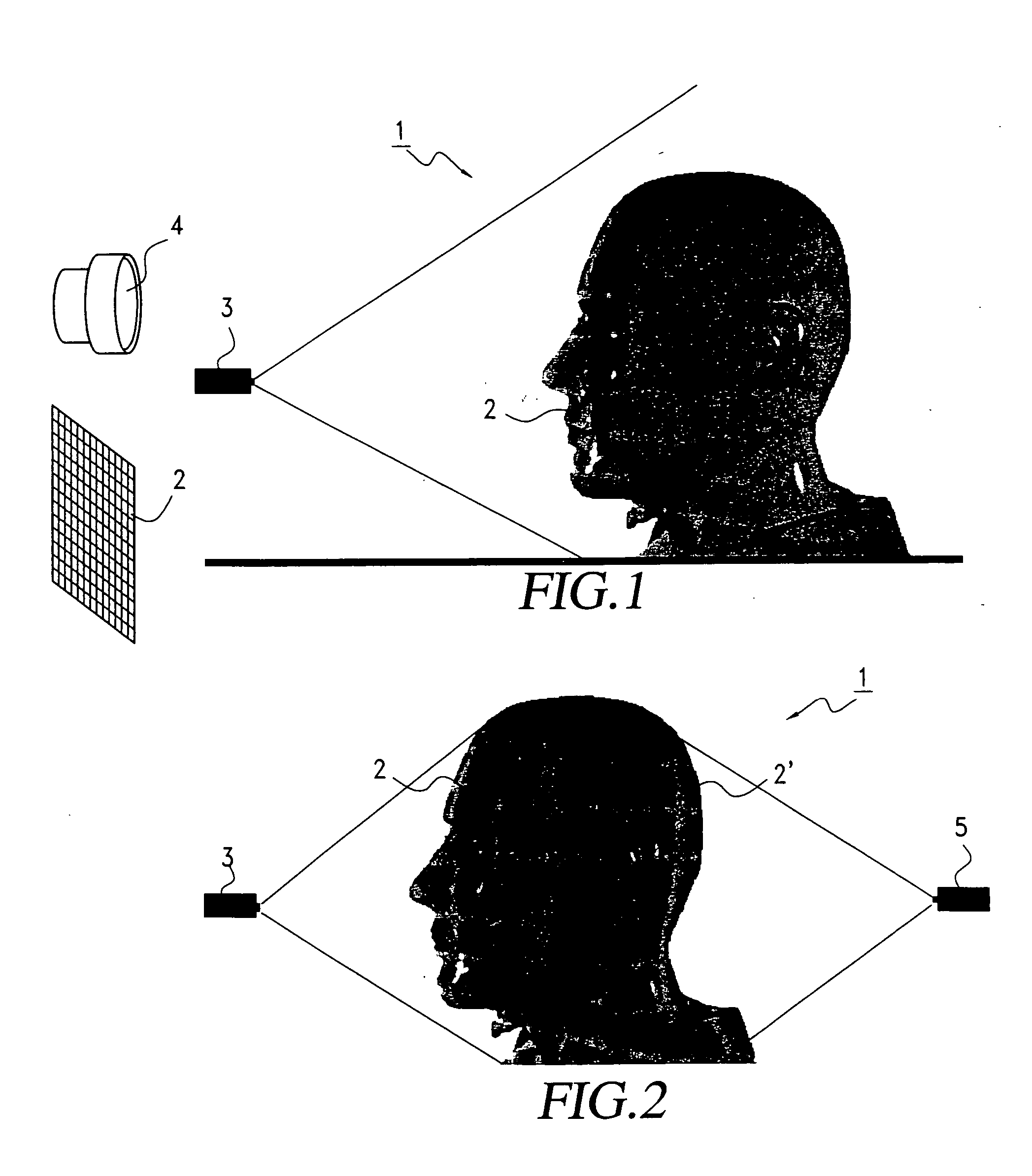System and method for inputting contours of a three-dimensional subject to a computer
a three-dimensional subject and computer technology, applied in the field of system and method for inputting contours of three-dimensional subjects to computers, can solve the problems of limited commercialization of technology, large amount of processor resources, and stretch the limits of currently available computer systems, so as to simplify electronic processing, easy to distinguish, and easy to distinguish
- Summary
- Abstract
- Description
- Claims
- Application Information
AI Technical Summary
Benefits of technology
Problems solved by technology
Method used
Image
Examples
Embodiment Construction
[0055]FIG. 1 illustrates an embodiment of the invention in which the subject 1 is illuminated by a single infrared grid 2 projected from the front of the subject by a projector 3. The subject 1 may also be illuminated by a substantially uniform light source 4, by multiple light sources, or by ambient light.
[0056] In a variation of the embodiment of FIG. 1, multiple grids 2 and 2′ may be projected onto the subject in order to enable capture of contours for the entire 360° of the subject by using an additional camera 5 (or, equivalently, by moving projector 3 around the subject), as illustrated in FIG. 2.
[0057] Each grid shown in FIGS. 1 and 2 is preferably an infrared grid having a wavelength of sufficient intensity to enable an image of the grid to be captured despite background infrared radiation that might be emitted by the subject, and is made up of mutually perpendicular horizontal and vertical lines. Suitable infrared light sources are well-known, as are cameras and film capa...
PUM
 Login to View More
Login to View More Abstract
Description
Claims
Application Information
 Login to View More
Login to View More - R&D
- Intellectual Property
- Life Sciences
- Materials
- Tech Scout
- Unparalleled Data Quality
- Higher Quality Content
- 60% Fewer Hallucinations
Browse by: Latest US Patents, China's latest patents, Technical Efficacy Thesaurus, Application Domain, Technology Topic, Popular Technical Reports.
© 2025 PatSnap. All rights reserved.Legal|Privacy policy|Modern Slavery Act Transparency Statement|Sitemap|About US| Contact US: help@patsnap.com



